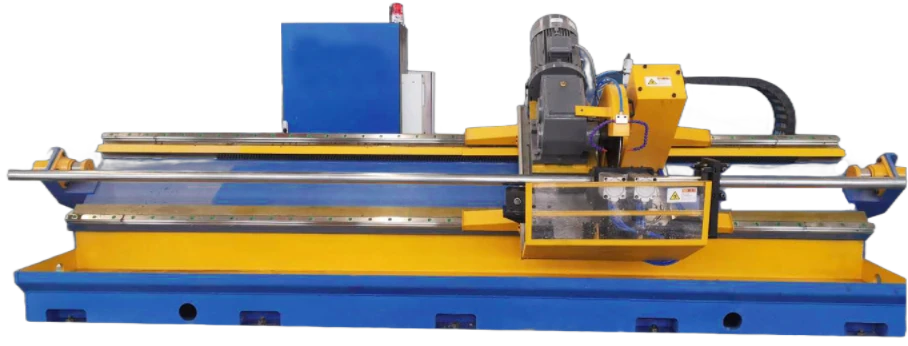Efficient Roll Forming Machine for Pop Channel Production
The Roll Forming Revolution Exploring the Pop Channel Roll Forming Machine
In the world of manufacturing and metal fabrication, the demand for innovation and efficiency continues to rise. One of the breakthrough technologies that has significantly transformed the industry is the roll forming machine, particularly the pop channel roll forming machine. This sophisticated piece of equipment is designed to produce various types of metal channels used across numerous applications, from construction and furniture to automotive and aerospace sectors.
Understanding Roll Forming
Roll forming is a continuous bending process in which a long strip of metal, usually in coil form, is fed through a series of rollers that gradually shape it into the desired cross-section. The process is known for its efficiency, ability to produce complex shapes, and minimal material waste. Among the various products manufactured through roll forming are pop channels—U-shaped metal profiles commonly used for lightweight construction applications, such as drywall framing, suspended ceilings, and even decorative structures.
The Mechanism of the Pop Channel Roll Forming Machine
A pop channel roll forming machine typically consists of several key components the uncoiler, roll forming stations, cutting mechanisms, and control systems. The uncoiler unwinds the metal coil, allowing it to be fed into the forming stations. Each station is equipped with rollers that incrementally shape the metal as it passes through them. The final step of the process involves cutting the formed channel to the required length, ensuring precision and consistency.
One of the remarkable aspects of pop channel roll forming machines is their ability to adjust to different sizes and specifications. By simply changing the set of rollers and cutting tools, manufacturers can produce a wide range of channel profiles with minimal downtime. This versatility is crucial in today’s market, where customization and quick turnaround times are essential for meeting customer demands.
Applications and Benefits of Pop Channels
pop channel roll forming machine

Pop channels are incredibly versatile and find applications in various industries. In construction, they provide a reliable framework for walls and ceilings, facilitating the installation of drywall and other materials. Their lightweight nature makes them easier to handle and transport, reducing labor costs. In the automotive industry, pop channels support structural components, providing strength without adding excessive weight. Additionally, they are used in furniture design, electrical installations, and even in HVAC systems.
The benefits of using pop channel roll forming machines extend beyond just the products they produce. One significant advantage is the reduction of material waste. The roll forming process enables manufacturers to use materials efficiently, cutting costs while being environmentally responsible. Furthermore, the precision offered by these machines translates to fewer errors and rework, enhancing overall productivity in the manufacturing process.
Innovations in Pop Channel Roll Forming Technology
As with many advanced manufacturing technologies, the pop channel roll forming machine has seen a wave of innovations. Modern machines are now equipped with advanced control systems that allow for real-time monitoring and adjustments. Automation plays a significant role, reducing the need for manual intervention and allowing for greater production speeds.
Additionally, the integration of computer numerical control (CNC) technology has revolutionized the way these machines operate. CNC systems enable manufacturers to program specific designs and automatically adjust the machine operation accordingly, leading to enhanced precision and the ability to produce complex shapes that were previously difficult to achieve.
Conclusion
The pop channel roll forming machine stands as a testament to the advancements in manufacturing technology. Its ability to produce high-quality, customized metal channels efficiently makes it a valuable asset across various industries. As technology continues to evolve, we can expect even greater innovations that will further enhance the capabilities and applications of roll forming machines, solidifying their place in the future of metal fabrication. In an ever-competitive landscape, embracing these advancements is crucial for manufacturers looking to thrive and maintain a competitive edge.
-
High Frequency Straight Seam Welded Pipe Production Line-BzZhou Xinghua Machinery Equipment Manufacturing Co., LTD.|Precision Welding, High EfficiencyNewsJul.30,2025
-
High Frequency Straight Seam Welded Pipe Production Line|BzZhou Xinghua|Precision Welding&EfficiencyNewsJul.30,2025
-
High Frequency Straight Seam Welded Pipe Production Line - BzZhou Xinghua|Precision Engineering&EfficiencyNewsJul.30,2025
-
High-Frequency Straight Seam Welded Pipe Production Line-BzZhou Xinghua Machinery Equipment Manufacturing Co., LTD.NewsJul.30,2025
-
High-Frequency Straight Seam Welded Pipe Production Line-BzZhou Xinghua Machinery Equipment Manufacturing Co., LTD.|Precision Manufacturing, High EfficiencyNewsJul.30,2025
-
High Frequency Straight Seam Welded Pipe Production Line-BzZhou Xinghua Machinery Equipment Manufacturing Co., LTD.|Precision Steel Pipe Manufacturing&Industrial EfficiencyNewsJul.29,2025


